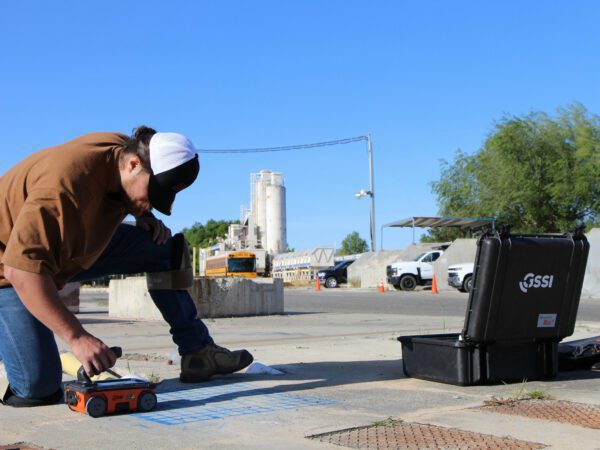Unveil the Transformative Power of Concrete Scanning in Making Best Use Of Effectiveness and Safety
Concrete scanning has actually become an important device in the building sector, providing unparalleled benefits in improving project effectiveness and guaranteeing safety and security standards. By using advanced innovation, concrete scanning permits professionals to see past the surface area, discovering surprise complexities that can affect the structural stability of a structure. The transformative power of concrete scanning depends on its capacity to supply real-time information and detailed insights, changing how jobs are prepared and executed. As we look into the details of this innovative method, a globe of possibilities opens up, showcasing a brand-new age of building and construction practices that prioritize precision and protection.
Relevance of Concrete Scanning
Making sure the structural honesty and safety of building and construction projects begins with the important action of carrying out extensive concrete scanning. Concrete scanning is a non-destructive approach utilized to identify and map subsurface aspects within concrete frameworks.
In addition, concrete scanning helps in optimizing project timelines and spending plan by avoiding unforeseen costs and hold-ups that might arise due to unanticipated blockages within the concrete. Eventually, spending in extensive concrete scanning is a proactive approach that boosts both efficiency and safety in construction tasks.
Just How Concrete Scanning Functions
Concrete scanning runs as a crucial device in building and construction tasks by using innovative modern technologies to identify and map subsurface components without creating architectural damage. Ground Penetrating Radar (GPR) and Electromagnetic Induction (EMI) are two primary techniques used in concrete scanning. GPR works by giving off high-frequency radar pulses right into the surface area, which recuperate when they encounter subsurface objects or gaps. The time considered the signal to return suggests the depth and area of the items. EMI, on the other hand, makes use of magnetic fields to recognize variations in material make-ups, such as determining rebar or conduits within concrete frameworks.
During the scanning procedure, the information collected is assessed in real-time, enabling immediate recognition of potential threats or barriers under the surface area. This details aids in decision-making, making sure that building activities proceed safely and effectively. Furthermore, 3D imaging software application can be made use of to produce topographic maps of the subsurface aspects, additionally boosting job planning and implementation. By using these innovative modern technologies, concrete scanning dramatically decreases the risk of expensive damages and injuries on building websites.
Advantages of Concrete Scanning
Utilizing advanced scanning technologies in construction projects uses a multitude of benefits, boosting both performance and safety and security on-site. Among the primary benefits of concrete scanning is the ability to spot and locate embedded objects such as rebar, post-tension cable televisions, and channels precisely. By identifying these elements prior to boring or cutting right into concrete frameworks, the danger of unexpected strikes is dramatically lowered, protecting against possible injuries to workers and damages to the framework itself. Concrete Continued scanning assists in planning and making a lot more efficiently, as it gives specific details concerning the location and deepness of structural parts.

Situation Researches: Concrete Scanning Success

In an additional situation, a construction firm made use of 3D concrete scanning to analyze the problem old concrete frameworks in a historic structure. The in-depth scans given useful insights into the degree of deterioration and assisted focus on maintenance initiatives effectively. By proactively attending to locations of issue recognized with scanning, the firm had the ability to prolong the life-span of the structure and guarantee owner safety.
These study underscore the transformative power of concrete scanning in improving performance, accuracy, and safety and security in construction jobs.
Implementing Concrete Scanning in Projects
Carrying out innovative scanning technologies throughout building and construction jobs has actually become significantly vital for boosting accuracy and safety and security. By incorporating concrete scanning right into task preparation and execution, building groups can identify potential risks, have a peek at these guys such as rebar or post-tension cables, concealed within concrete frameworks. This proactive method lessens the danger of mishaps, delays, and costly rework, ultimately leading to more reliable task timelines and budget plans.
To execute concrete scanning efficiently, project managers should collaborate very closely with knowledgeable scanning experts to identify the most ideal scanning strategies for the certain project needs. Involving scanning professionals from the beginning of a task allows the team to create thorough scanning strategies that attend to vital locations of problem and make certain complete data collection.
Additionally, including concrete scanning into routine job process can improve decision-making processes, as real-time scan data provides immediate insights into the problem of concrete frameworks - Concrete Scanning. This data-driven method promotes educated analytic and allows teams to make changes quickly, fostering a society of efficiency and security throughout the task lifecycle

Final Thought
To conclude, concrete scanning plays a vital duty in enhancing effectiveness and safety and security in construction jobs. By making use of advanced innovation to map and find out underlying frameworks within concrete, this procedure helps to stop expensive blunders, make certain architectural integrity, and reduce dangers on website. With the capacity to reveal surprise elements and give exact information, concrete scanning proves to be a beneficial device for maximizing job outcomes and taking full advantage of total success.
Concrete scanning is a non-destructive approach made use of to detect and map subsurface aspects within concrete structures. In addition, concrete scanning helps in enhancing task timelines and spending plan by staying clear of unanticipated prices and hold-ups that might develop due to unanticipated blockages within the concrete. One significant situation research study involves a large-scale renovation project where concrete scanning played an important duty in guaranteeing project success.In another instance, a building and construction business utilized 3D concrete scanning to assess the problem of maturing concrete useful site structures in a historic structure. By integrating concrete scanning into task preparation and execution, construction groups can recognize prospective risks, such as rebar or post-tension cable televisions, concealed within concrete frameworks.